Alcohol service has long been a feature of island air travel, and policies vary widely by airline. Airlines must carefully balance customer service and safety on Hawaii routes, especially as ongoing alcohol-related disruptions continue to make headlines. Here’s how major airlines serving Hawaii each manage in-flight alcohol service.
“Politeness and respect toward crew members can positively influence the experience. One traveler noted that phrasing requests courteously—such as, ‘I’ll have one more of those, please’—often improves the crew’s response. Appropriate airline caution amid a rise in in-flight disturbances have also contributed to a generally far more conservative alcohol service approach across the board.”
Beat of Hawaii Editors.
Alaska Airlines: balancing limits and hospitality.
Alaska Airlines maintains structured limits to ensure responsible consumption. We were told by a flight attendant that passengers typically receive two alcoholic drinks per service, with two service rounds on Hawaii flights allowing for up to four drinks. Another employee told us this about Hawaii flights: “Ultimately on a five hours flight to Hawaii that would allow a total of 5 drinks total to any one person.” Additional requests are handled case-by-case, with only one drink served at a time. Flight attendants are empowered to cut off service if passengers show signs of intoxication, ensuring compliance with FAA regulations.
While occasionally inconsistent, this approach prioritizes safety while offering passengers a welcoming experience.
Hawaiian Airlines: a moderation approach.
Hawaiian Airlines integrates alcohol service with its in-flight meal and snack offerings. Passengers in the main cabin can purchase beer, wine, or spirits, and premium passengers enjoy complimentary options. While specific limits are not detailed, anecdotal accounts suggest that moderation is consistently enforced. The airline emphasizes compliance with FAA guidelines, prohibiting personal alcohol consumption and restricting service to visibly intoxicated passengers.
Southwest Airlines: standardized and controlled.
Southwest Airlines serves alcoholic beverages on Hawaii flights with a one-drink-per-service pass policy. Flight attendants try to balance hospitality with safety, applying discretion based on passenger behavior and flight conditions. While some passengers report receiving multiple drinks at once, others recount being limited to one drink per hour.
A Southwest crew member clarified, “There is no one-drink-per-hour rule. The law states we cannot serve someone who appears intoxicated.” This policy underscores the airline’s effort to balance a laid-back image with the critical need to avoid mid-flight disruptions.
Delta Air Lines: premium options with limits.
Delta provides alcohol across all cabins on Hawaii flights, with complimentary options for premium passengers and for-purchase offerings in economy. Passenger experiences vary widely, with some reporting generous service and others encountering limits, such as “two drinks at a time” or outright refusals.
Delta’s approach emphasizes safety and discretion, which can result in inconsistent enforcement. Passengers report that service often depends on the specific crew’s judgment and stock availability.
United Airlines also balances flexibility and safety.
United Airlines allows passengers to request up to two drinks at a time on Hawaii flights, with service consistency varying based on crew discretion and flight conditions. Frequent flyers describe a mix of experiences, from attentive service with multiple rounds to enforced limitations when challenges arise. United’s policy seeks to align flexibility with FAA regulations, prioritizing passenger safety.
American Airlines: a case-by-case strategy.
American Airlines offers complimentary premium cabin drinks and alcohol for purchase in economy on Hawaii flights. Alcohol service varies significantly, as flight attendant discretion plays a major role in enforcement. Passengers report mixed reviews, some citing attentive and flexible service and others being cut off after only a few drinks.
The challenges of today’s in-flight alcohol service.
Alcohol affects passengers more strongly at high altitudes due to reduced cabin pressure, increasing the likelihood of intoxication. This heightened effect has contributed to a rise in passenger incidents, prompting airlines to continue to both refine and restrict their alcohol policies and to enhance crew training.
FAA regulations prohibit passengers from consuming alcohol not served by the airline, and carriers are also increasingly vigilant in enforcing this rule. Some airlines have also advocated for better restrictions on airport bar alcohol sales to curb pre-boarding intoxication issues.
Should airlines tighten alcohol policies?
As alcohol-related airline problems grow, calls for stricter in-flight alcohol policies only intensify. Industry experts debate setting clear drink limits or banning alcohol entirely on shorter flights. Others argue that responsible service and enforcement of existing rules provide the best balance between enjoyment and safety.
Understanding how these policies are evolving for travelers heading to Hawaii can lead to a smoother journey and a safer onboard environment.
Please share your thoughts about alcohol on Hawaii flights.
Photo Credit – Beat of Hawaii, United Airlines Polaris Class.
Get Breaking Hawaii Travel News
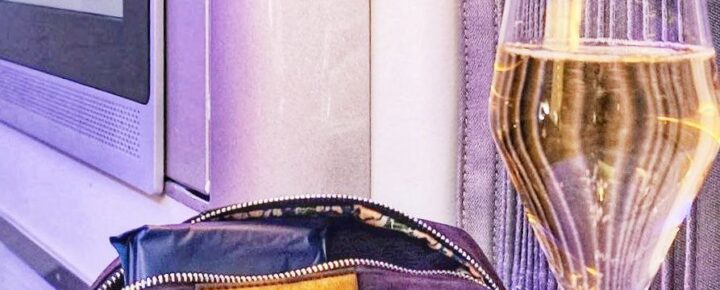
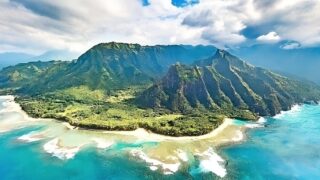
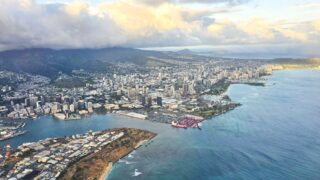
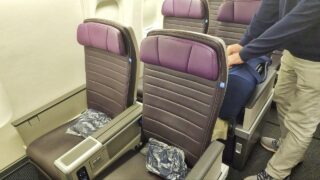
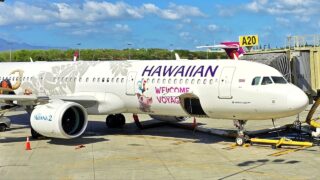
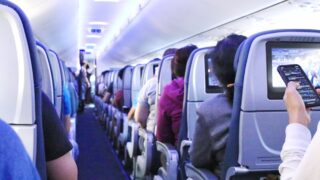
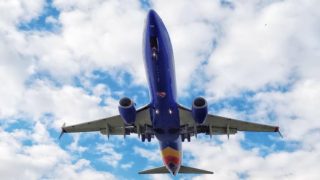
Interesting how someone would go to any length to get the lowest airfare, then once they get seated they pull out a credit card to pay for over priced drinks.
I agree with you!
Personally, I’m not in the ‘Ban Alcohol’ camp. Responsibility is the key, the Clinton Eastwood line, “a man must know his limitations” works. The Airline never denies boarding to those who have spent hours in the Airport Bar or various Airline-AE Clubs before boarding. How many would resort to carrying their own on-board in those mini-bottles? Being a Beer or Wine guy, I can see 3-4 over 5 hour’s, if that were Martini’s, that’s trouble!
If you can’t handle liquor you shouldn’t be flying, and by can’t handle I don’t mean vomiting, but if alcohol makes you violent you shouldn’t be anywhere near an aircraft.
Why not just ban it? People can do without alcohol for a few hours. The airlines don’t want to give up the revenue so they’ll put passengers and staff at risk for money. It’s the American way!!
Yes, revenue from alcohol is also the reason that resorts in West Maui like the Hilton Vacation Club & the Aston Kaanapali Shores doesn’t allow us to dance when our favorite musician plays. We have been told that the Liquor License Dpt put those restrictions. It’s obviously in their interest that people buy alcohol but not dance. I would love if BOH would do another article about that topic …
I’ll keep saying it and I keep saying it to anyone at Hawaiian (now Alaska) that will listen – whoever was in charge of beverage that changed the Mai Tai should be forced to drink 10 of them. It’s horrid and it stinks like gym feet. First one I had I could barely get it down thinking the drink itself was bad. Ordered another, confirmation it’s the drink itself.
Bring back the old Mai Tai, because internet isn’t enough to keep my paying first class once a month!
Kinda missed the point of the article there Bill.
It’s about safety versus customer service not whether that Mai Tai in first class is any good.
Yes. I had the Hawaiian mai tai once and it was terrible .
I’ve never been cut off anywhere in the world that I’ve ridden an airliner. I refuse to call it “flying” as the only flying I’ve done is when I’m PIC. Otherwise it is doing my imitation of self loading cargo on a pressurized aluminum mailing tube.
BTW, the FAA says in their rules that a PIC may not allow anyone who is visibly intoxicated from boarding a flight. If the airlines enforced this rule it would solve that problem. And if you need 5 drinks on a flight from the west coast to Hawaii there is something wrong with you or the airline you have chosen to ride.
The comment about appearance playing a role really stood out to me. It’s kind of sad if that’s true, but I wouldn’t be surprised if it is. Of course courtesy always helps.
It’s crazy how inconsistent these rules seem to be. Alaska Airlines has a more clear limit in my experience, but on American, it feels like a coin toss whether you’ll get cut off or not.
Honestly, the idea of banning alcohol on flights doesn’t seem so bad. Too many people can’t handle themselves, especially on vacation flights. And we seriously don’t need any more of these issues breaking out.
I’ve been cut off on a Hawaii flight before and honestly, I wasn’t even drunk. Maybe I just looked tired? Anyone else have this happen?
I always wondered why some airlines are so strict with alcohol and others seem more lenient. Is it really about safety, or are there other factors at play?
Yes there are factors…. altitude affects some people more than others. 1 drink is as 2-3 for some at higher altitudes. Dealing with disruptive passengers in close quarters and at 35,000 feet can be unnerving! I was a flight attendant for 25 years and have some crazy stories to tell!
Profit is the other factor.
Yes, please set clear limits for the safety of all passengers. Someone being cut off after “only” a few drinks? The thought of 5 alcoholic drinks per person makes me sick. And why put the burden on flight attendants? I would choose an airline that has a policy of 2 alcoholic beverages per person (which is also the daily maximum recommended by the U.S. Department of Health & Human Services to prevent chronic disease). If people choose to wrack their health, it’s on them, but I don’t want to sit next to them. Airlines should be about safety for all passengers. Mahalo!
Why not 0 drinks per person. Problem solved.
I would be ok with that, but still think it’s a shame that the US always has to go to from one extreme to the other. For example, when I fly to Europe with Air France (in economy class), they offer a glass of wine with your meal & even an after dinner drink or a glass of Champagne (at no charge). I have never seen anyone drunk or out of line on any of their flights.
I think the attitudes towards alcohol may be different from the clientele of Air France and a US airline. Also different attitudes to alcohol as a revenue source and customer safety.
I work for a major carrier – and my genuine concern is that is that at altitude, you are more sensitive to the effects of alcohol. Then when we land often times you rent a car and drive impaired in unfamiliar roads.
So yes, it is crew member discretion for your safety and the safety of those around you 👏 👍 😀
I wish it was more consistent-
Many, many moons ago when I was attending college on the mainland we were never hassled about our ages from PanAm, Northwest or Continental. Therefore, we could imbibe. Of course in those daze we dressed appropriately and we were on our best behavior. The reasoning was, since we were traveling over international waters there would be no problem with serving drinks to minors. I’ll buy that!
Mele Kalikimaka everyone.